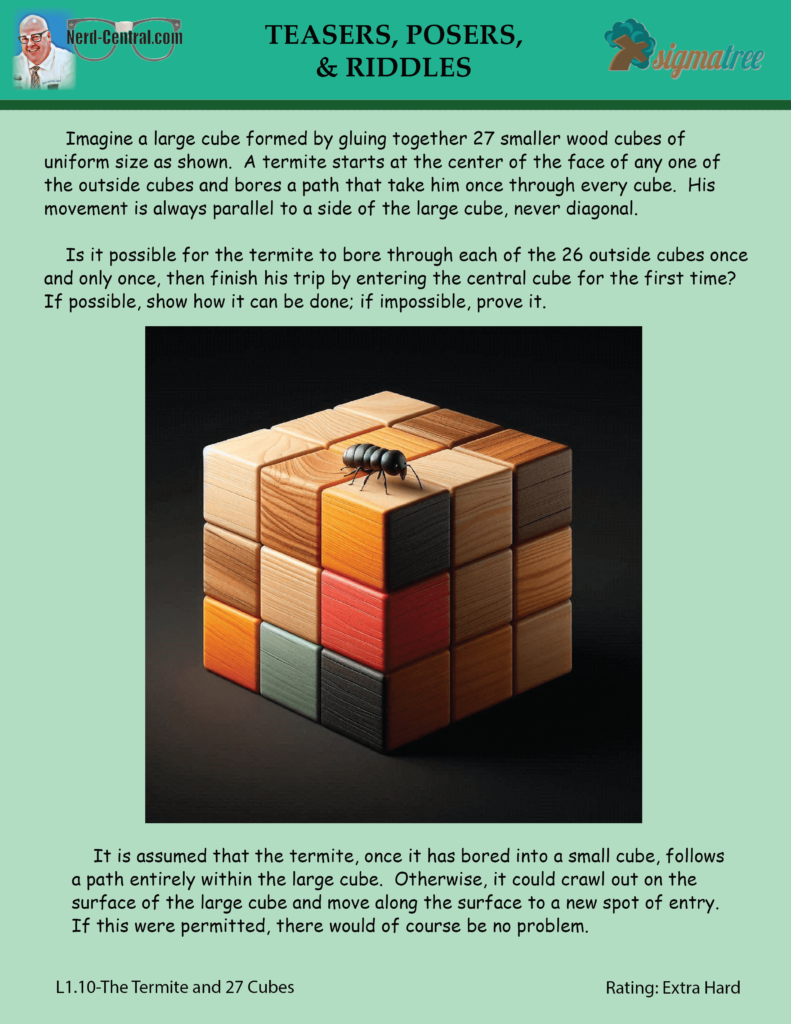If you enjoy riddles, teasers, or posers then this is just for you. Each comes with a postulated question that tricks and challenges the mind. Some are easy and some are hard. Try not to over think them and enjoy the imagery. The answer to the riddle, poser, or teaser is below. Try not to look until you are truly ready.

It is not possible for the termite to pass once through the 26 outside cubes and end its journey in the center one.
This is easily demonstrated by imagining that the cubes alternate in color like the cells of a three-dimensional checkerboard. The large cube will then consist of 13 cubes of one color and 14 of the other color. The termite’s path is always through cubes that alternate in color along the way; therefore, if the path is to include all 27 cubes, it must begin and end with a cube belonging to the set of 14. The central cube, however, belongs to the 13 set; hence the desired path is impossible.
The problem can be generalized as follows: A cube of even order (an even number of cells on the side) has the same number of cells of one color as it has cells of the other color. There is no central cube, but complete paths may start on any cell and end on any cell of opposite color. A cube of odd order has one more cell of one color then the other, so a complete path must begin and end on the color that is used for the larger set. In odd-order cubes of orders 3, 7, 11, 15, 19, . . . the central cell belong to the smaller set, so it cannot be the end of any complete path. In odd-order cubes of 1, 5, 9, 13, 17, . . . the central cell belongs to the larger set, so it can be the end of any path that starts on the cell of the same color. No closed path, going through every unit cube, is possible on any odd-order cube because of the extra cube of one color.
Many two-dimensional puzzles can be solved quickly by similar “parity checks”. For example, it is not possible for a rook to start at one corner of a chessboard and follow a path that carries it once through every square and ends on the square at the diagonally opposite corner.




